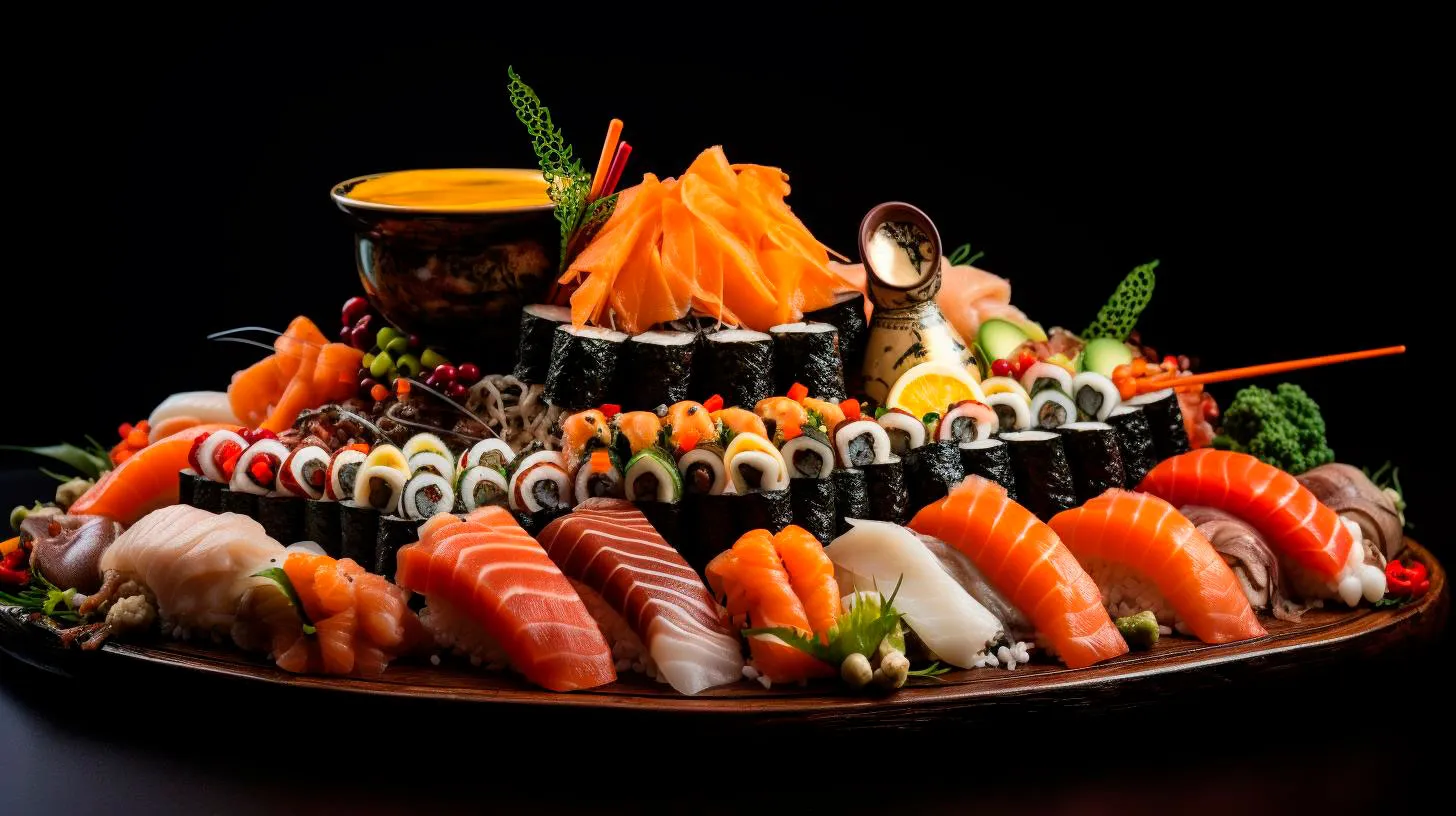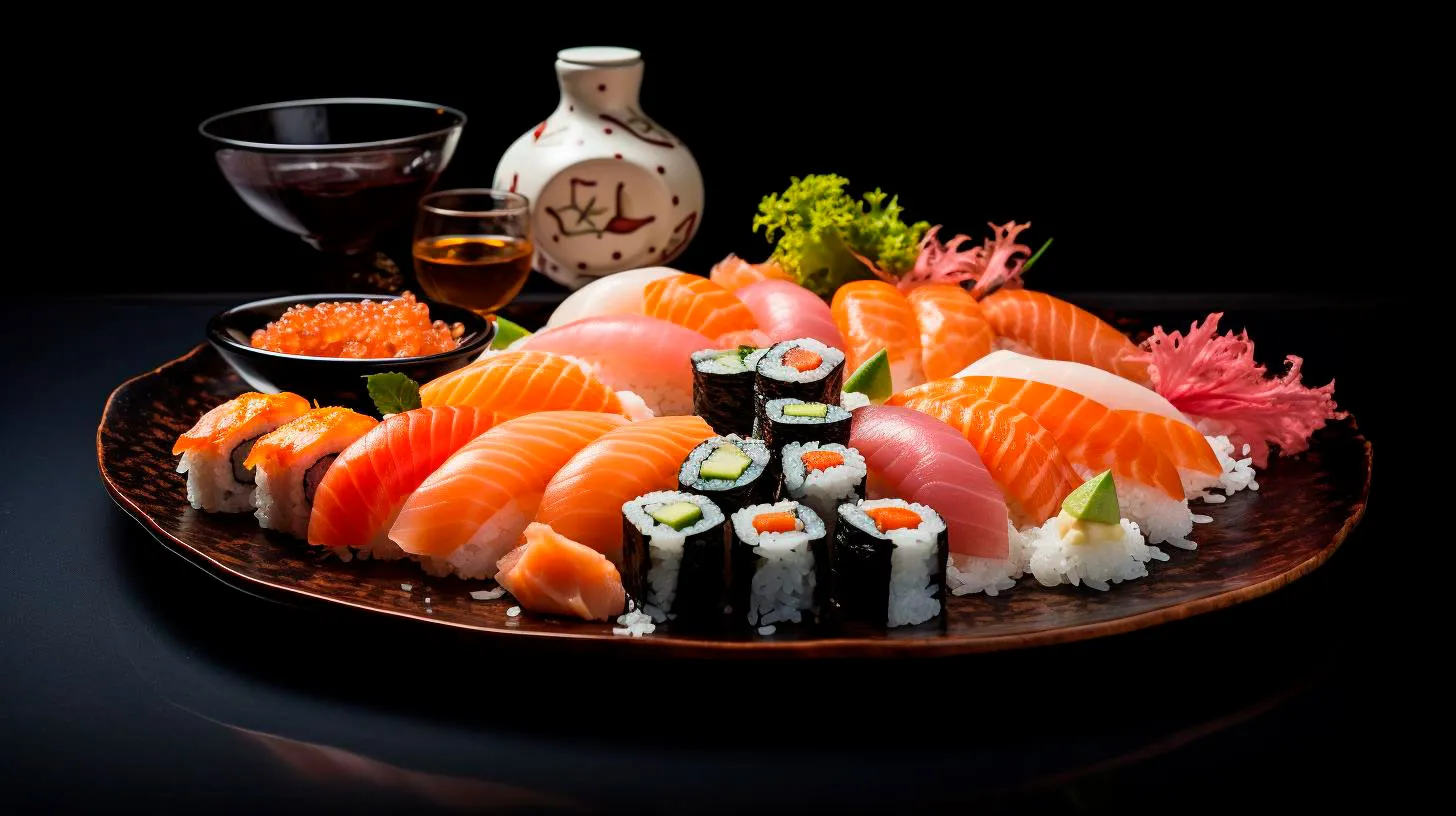Discovering the Art of Japanese Tea Ceremony

The Essence of the Japanese Tea Ceremony
The traditional Japanese tea ceremony is a meticulously choreographed ritual that focuses on every detail, from the preparation of the tea to the serving etiquette. Every movement, gesture, and object holds significance, creating a harmonious and mindful experience for both the host and the guests.
The Tea Room
The tea ceremony takes place in a dedicated tea room called a “chashitsu.” These tranquil spaces are designed with simplicity and minimalism in mind, providing a serene atmosphere for the participants. The traditional architecture, including tatami mats, sliding doors, and a tokonoma alcove for displaying art, adds to the aesthetic appeal of the tea room.
The Tea Utensils
Tea utensils play a crucial role in the tea ceremony, each carefully chosen for its unique beauty and significance. These utensils include a tea bowl (chawan), a bamboo whisk (chasen), a tea scoop (chashaku), and a tea caddy (natsume). The materials, shapes, and craftsmanship of these items contribute to the overall experience of the ceremony.
Key Takeaway: The tea room and tea utensils are essential elements of the Japanese tea ceremony, creating an environment of tranquility and aesthetic harmony.
The Ritual Process
The Japanese tea ceremony follows a specific sequence of movements and etiquette. Each step is meticulously performed, creating a sense of rhythm, mindfulness, and connection between the participants.
Purification
The ceremony begins with the host purifying the utensils by rinsing them with hot water. This symbolic act cleanses both the physical and spiritual space, preparing it for the tea preparation process.
Preparing the Tea
The host then carefully measures the powdered tea into the tea bowl and adds hot water. Using the bamboo whisk, they skillfully whisk the tea until it becomes frothy, creating a vibrant green concoction with a unique flavor profile.
Serving the Tea
The host offers the bowl of tea to the main guest, who receives it with a bow of gratitude. The guest sips the tea in three deliberate sips, appreciating the aroma, taste, and texture of the tea.
Key Takeaway: The ritual process of the Japanese tea ceremony involves purification, tea preparation, and serving, creating a meditative experience that emphasizes mindfulness and gratitude.
The Significance of the Japanese Tea Ceremony
The Japanese tea ceremony is more than just a way to enjoy a cup of tea. It serves as a medium for interpersonal connections, self-reflection, and the appreciation of beauty and harmony. Here are some key benefits and takeaways of this ancient art:
- Mindfulness and Meditation: The tea ceremony encourages participants to be present in the moment and engage in mindful actions, fostering a sense of calm and tranquility.
- Social Bonding: The tea ceremony promotes social interactions and nurtures relationships, providing a space for heartfelt conversations and connection.
- Respect and Gratitude: The etiquette and gestures involved in the ceremony cultivate a sense of respect, gratitude, and humility towards others and the natural world.
- Aesthetic Appreciation: The artistry and craftsmanship of the tea utensils, as well as the simplicity of the tea room design, teach participants to embrace and appreciate beauty in everyday objects.
A Unique Window into Japanese Culture
The Japanese tea ceremony is a captivating window into the heart and soul of Japanese culture. Its profound connection with Zen Buddhism, focus on mindfulness, and exquisitely detailed aesthetics make it an art form that combines spirituality, social interaction, and sensory pleasure.
By participating in or observing a tea ceremony, one can gain a deeper understanding of the Japanese way of life, its values, and its commitment to preservation and refinement. Whether in Japan or abroad, this centuries-old tradition continues to enchant and inspire people worldwide.
Key Takeaway: The Japanese tea ceremony offers a unique and immersive experience that provides insights into Japanese culture, including mindfulness, social bonding, and aesthetic appreciation.
Embark on a journey of tranquility and elegance through the Japanese tea ceremony, where every detail is carefully crafted to create a harmonious experience. From the serene tea room to the ritualistic movements, this ancient art form continues to captivate individuals with its beauty, spirituality, and cultural significance. Immerse yourself in this timeless tradition and discover the art of Japanese tea for yourself.
Elevate Your Tea Tasting Skills with Japanese Tea Appreciation Courses
If you’re a tea enthusiast looking to deepen your understanding and elevate your tea tasting skills, enrolling in Japanese tea appreciation courses can be an enlightening and rewarding experience. Let’s explore how these courses can enhance your tea journey.
Understanding the Essence of Japanese Tea
Japanese tea is characterized by its unique flavors, production methods, and cultural significance. By enrolling in tea appreciation courses, you’ll gain a deep understanding of the essence of Japanese tea, allowing you to truly appreciate its nuances. These courses cover various types of Japanese tea, such as:
- Matcha: Learn about the ceremonial preparation of matcha, the vibrant green powdered tea often used in Japanese tea ceremonies. Discover the proper techniques for whisking matcha to achieve the perfect froth and rich flavor.
- Sencha: Explore the most popular type of Japanese green tea, sencha. Understand the different cultivation methods and the impact they have on the taste and aroma of the tea.
- Gyokuro: Delve into the world of gyokuro, a premium shade-grown tea known for its sweet flavor and mellow character. Learn about the shading process and how it affects the tea’s unique qualities.
- Hojicha: Discover the toasty and nutty flavors of hojicha, a roasted green tea. Understand the roasting techniques and how they bring out the distinct taste profile of this tea.
Mastering the Tea Preparation Process
Japanese tea appreciation courses not only teach you about the different types of tea but also guide you through the art of preparing the perfect brew. Through hands-on practice, you’ll learn the precise measurements, water temperatures, and infusion times required for each type of tea. These courses will equip you with the knowledge to brew authentic Japanese tea like a pro. Key takeaways include:
- Understanding the importance of water quality in brewing tea.
- Mastering the traditional tea tools and utensils used in Japanese tea ceremonies.
- Learning the proper techniques for handling and storing different types of tea.
- Gaining insights into the cultural and historical significance of tea in Japan.
Exploring the Tea Ceremony Aesthetic
Japanese tea ceremonies are not just about the tea itself; they embody a unique aesthetic that incorporates harmony, respect, purity, and tranquility. Enrolling in Japanese tea appreciation courses allows you to immerse yourself in this enchanting world and understand the deeper meaning behind each gesture and movement. Key features of tea ceremony aesthetics include:
- The art of serving tea with grace and mindfulness.
- The significance of the tea room layout and design.
- Appreciating the beauty of traditional tea utensils and art pieces.
- Learning the proper etiquette and behaviors during a tea ceremony.
Benefits of Japanese Tea Appreciation Courses
By enrolling in Japanese tea appreciation courses, you’ll reap numerous benefits that will enhance your tea tasting skills and overall tea journey. Some advantages include:
- Deeper appreciation: Gain a profound understanding of Japanese tea, its characteristics, and its cultural significance, enabling you to appreciate and enjoy tea on a whole new level.
- Enhanced sensory experience: Learn to identify and savor the subtle flavors, aromas, and textures of different types of tea, enhancing your sensory experience during tea tasting.
- Cultural enrichment: Immerse yourself in the rich cultural traditions associated with Japanese tea ceremonies and gain insights into the values and philosophies surrounding tea.
- Connection and mindfulness: The art of tea appreciation encourages deep connections, mindfulness, and introspection, providing a respite from the fast-paced modern world.
According to statistics, the popularity of Japanese tea has been steadily increasing worldwide, with a 30% rise in tea exports from Japan over the past decade. The demand for quality Japanese tea continues to grow, making it an opportune time to delve into the world of Japanese tea appreciation.
Ignite Your Passion for Japanese Tea Today
Embark on a journey of sensory exploration and cultural enrichment by enrolling in Japanese tea appreciation courses. Elevate your tea tasting skills, deepen your knowledge of Japanese tea, and unlock a world of tranquility and mindfulness through the art of tea ceremony. Ignite your passion for Japanese tea today and experience the true essence of this ancient beverage.
From Leaf to Cup: Exploring the Manufacturing Process of Japanese Tea
In this article, we will take a closer look at the fascinating process behind the production of Japanese tea.
The Art of Tea Cultivation
The journey of Japanese tea begins with the cultivation of tea plants. Japan’s unique climate and geography create the perfect environment for tea cultivation. The careful selection of tea varieties, such as Gyokuro and Sencha, plays a crucial role in producing distinct flavors and aromas.
- Key Takeaway: The cultivation process forms the foundation for producing high-quality Japanese tea.
- Advantage: Japan’s ideal climate and geography contribute to the unique flavors of its tea.
- Statistical Reference: According to the Ministry of Agriculture, Forestry, and Fisheries of Japan, the country produced approximately 92,000 metric tons of tea in 2020, making it the 8th largest tea producer globally.
The Harvesting Stage
The timing of tea leaf harvest is critical to preserving the desired flavors and aromas of Japanese tea. The first flush, known as “Shincha,” is highly sought after for its fresh and vibrant characteristics. During this stage, skilled tea pickers delicately hand-pick the youngest and most tender tea leaves.
- Key Takeaway: Harvesting at the right moment allows tea producers to capture the distinct qualities of Japanese tea.
- Advantage: Hand-picked tea leaves ensure the preservation of the tea’s delicate flavors and aromas.
- Statistical Reference: According to the Tea Research Institute of Japan, the average tea yield per hectare in Japan was 401 kg in 2020.
The Steaming and Rolling Process
One of the distinguishing factors of Japanese tea manufacturing is the unique steaming process. Immediately after harvesting, the tea leaves are subjected to a brief steaming, which halts oxidation. This step helps preserve the vivid green color and the natural flavors of the tea. Following steaming, the leaves are carefully rolled to shape them into their final form. This rolling process varies depending on the type of tea being produced.
- Key Takeaway: Steaming and rolling are crucial steps in preserving the freshness and flavor of Japanese tea.
- Advantage: Steaming preserves the vibrant green color and natural flavors of the tea leaves.
- Statistical Reference: According to the Ministry of Agriculture, Forestry, and Fisheries of Japan, approximately 74% of the tea produced in Japan is steamed.
The Final Stages: Drying and Packaging
After the steaming and rolling phases, the tea leaves undergo a drying process to reduce moisture content. This step ensures the tea’s long-term preservation and prevents the growth of mold or other contaminants. Once dried, the tea is meticulously inspected for quality assurance, and then sorted and packaged according to its intended market.
- Key Takeaway: Drying and packaging are crucial for maintaining the freshness and quality of Japanese tea.
- Advantage: Careful inspection and sorting guarantee that only the finest tea reaches consumers.
- Statistical Reference: The Japan External Trade Organization (JETRO) reports that Japan exported approximately 22,000 metric tons of tea in 2020.
Appreciating the Craftsmanship
From leaf to cup, the manufacturing process of Japanese tea exemplifies the dedication and precision of tea producers in Japan. The craftsmanship and attention to detail applied at each stage ensure that tea enthusiasts can enjoy a truly exceptional tea-drinking experience. Understanding the intricacies of this process introduces a newfound appreciation for the centuries-old art of Japanese tea production.
Key Takeaways:
- The cultivation process is essential for producing high-quality Japanese tea.
- Harvesting at the right moment captures the distinct qualities of the tea leaves.
- Steaming and rolling preserve the freshness and flavor of the tea.
- Drying and packaging maintain the freshness and quality of Japanese tea.
- Japanese tea production showcases the dedication and precision of tea producers.
As tea lovers continue to explore the diverse range of Japanese tea, the journey from leaf to cup becomes an enriching experience. Immerse yourself in the world of Japanese tea manufacturing and savor the beauty and flavor of this beloved beverage.
The Health Benefits of Japanese Green Tea: Myth or Reality
In this article, we delve into the truth behind the health benefits of Japanese green tea and explore how it can contribute to your overall well-being.
The Japanese Green Tea Difference
Before we dive into the potential health benefits, it’s important to understand what sets Japanese green tea apart. Unlike black tea, which undergoes fermentation, and Oolong tea, which is partially fermented, green tea is produced by steaming or pan-frying the leaves, preserving its natural antioxidants.
A Powerful Source of Antioxidants
Japanese green tea, particularly matcha, is rich in a type of antioxidant called catechins. The most potent catechin, epigallocatechin gallate (EGCG), is known for its potent antioxidant properties. These antioxidants help neutralize harmful free radicals in the body, thereby reducing oxidative stress and contributing to various health benefits.
Potential Health Benefits of Japanese Green Tea
While the health benefits of Japanese green tea have been the subject of much research, it’s important to note that individual results may vary. Nevertheless, here are some potential health benefits that scientific studies have suggested:
- Boosts metabolism and weight loss: Studies indicate that the catechins in green tea can increase metabolism and enhance fat oxidation, making it a potential aid in weight management.
- Supports heart health: The antioxidants in Japanese green tea may help improve cardiovascular health by reducing the risk of heart disease and lowering LDL cholesterol levels.
- Enhances brain function: Green tea contains caffeine and the amino acid L-theanine, which have been shown to improve brain function, attention, and alertness.
- Protects against chronic diseases: The antioxidants in green tea have been associated with a reduced risk of certain cancers, such as breast, prostate, and colorectal cancers.
- Boosts immune system: The catechins in green tea have antimicrobial properties that may support the immune system and provide protection against infections.
How to Incorporate Japanese Green Tea into Your Routine
If you’re intrigued by the potential health benefits of Japanese green tea, here are some easy ways to incorporate it into your daily routine:
- Sip a hot cup: Enjoy a warm cup of brewed green tea to kickstart your day or relax in the evening. Steep the tea bag or loose leaf tea in hot water for 1-2 minutes to extract its flavors and benefits.
- Try matcha: Prepared by whisking powdered green tea leaves in water, matcha offers a concentrated dose of antioxidants. Add it to smoothies or baked goods for an extra boost.
- Infuse with flavors: Experiment with different flavors like lemon, ginger, or mint by infusing them with green tea. This adds a refreshing twist to your daily cup.
- Enjoy it cold: During hot summer months, brew a batch of green tea and refrigerate it for a refreshing and hydrating beverage throughout the day.
The Bottom Line
While the health benefits of Japanese green tea are supported by scientific research, it’s important to remember that it’s not a magical cure-all solution. Incorporating Japanese green tea into a healthy lifestyle that includes a balanced diet and regular exercise can contribute to overall well-being.
So, whether you’re looking to boost your metabolism, improve heart health, or simply enjoy a soothing cup of tea, Japanese green tea presents a world of potential health benefits. Give it a try and experience the wonders this ancient elixir has to offer!



